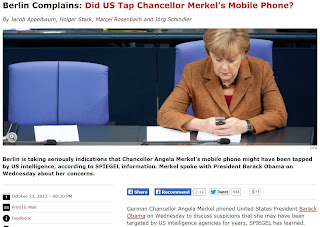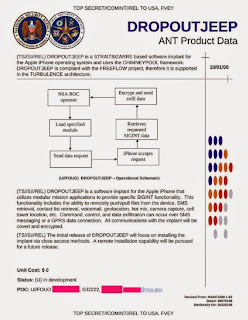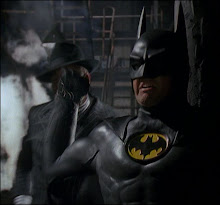Overview of the Central African Republic and its Current Unrest
The Central Africa Republic (CAR) borders Cameroon to the west, then the Republic of the Congo to the southwest, the Democratic Republic of the Congo (formerly Zaire) to the south and southeast, South Sudan to the east, Sudan to the northeast, and Chad to the north. (Significantly, there is only a narrow strip of Cameroon between the Central African Republic and the part of Nigeria where Boko Haram is based; more on this in later posts at this blog.) Landlocked, with periodic political instability resulting in coups, and with ineffective and corrupt government, the Central African Republic is one of the least developed countries in the world. Statistics from a 2010 country profile help illustrate the situation:
An estimated 62.4 percent of the population lives below the poverty line, and life expectancy is only 46.7 years. Moreover, CAR has a very young population, with a child dependency ratio of 72.3. While education is compulsory for six years and the literacy rate is 48.6 percent, there are few viable economic opportunities for CAR's youth. Its poor development places the country near the bottom of the Human Development Index, ranking 179 out of 182 countries.4
A UK House of Commons document dated February 19, 2014, and authored by Jon Lunn, entitled The Central African Republic: A Primer on the Current Crisis, offers a summary of the situation in the Central African Republic as of that time:
President Francois Bozize of the Central African Republic (CAR) was overthrown in March 2013 by a rebel coalition called Seleka, which then installed its leader, Michael Djotodia, as the new president. However, the country remained in turmoil and 'self-defence groups' opposed to Seleka, called Anti-Balaka, took up arms. By late 2013, senior UN officials were warning the conflict had turned into one between the Muslim minority, which was heavily represented in Seleka, and the Christian majority, represented in Anti-Balaka. They said there was a real danger of genocide. The country's population of around five million people is estimated to be 50% Christian, 25% Muslim and 35% Animist. [A typo causes this sum to be 110%. The true value for the Muslims should be 15%. - EL] A high proportion of Muslims live in the north. But many experts caution against over-simplified narratives of 'Christian versus Muslim' and question claims of possible genocide.
Central African Republic Situation UNHCR Regional Update 42, summarizing the situation as of December 5, 2014, the first anniversary of the retaking of the capital, Bangui, by the anti-Balaka militia who drove the Séléka forces out, brings the matter more current:
A year after the anti-Balaka militia overran Bangui, the capital of the Central African Republic, more than 854,000 people, or nearly one-fifth of the country's population of 4.5 million, remain displaced – including 430,000 IDPs and over 424,000 refugees in the neighbouring countries of Cameroon, Chad, the Democratic Republic of the Congo and the Republic of Congo. On 5 December last year, Bangui and the town of Bossangoa, until then in the hands of the rebel Seleka movement, fell to the anti-Balaka, further escalating the violence and the displacement crisis. The CAR situation remains one of the world's largest humanitarian crises, yet it is at risk of becoming overshadowed by other pressing crises if more support is not provided.
To summarize, Séléka forces were rebelling against the government in Bangui headed by President François Bozizé, ultimately taking the city and establishing their own government.
Séléka forces are predominantly Muslim, from the less developed northeastern regions of the country. (In this respect, the situation is very similar to the ongoing unrest in Nigeria, which is separated from the Central African Republic by the borderlands between Cameroon and Chad.) They include poachers and smugglers, Janjaweed militia from Darfur and other forces supported by Sudan, and mercenaries.
Séléka forces use the profits from smuggling diamonds and other commodities to fund their operations. Because of their close ties to corrupt elements of the Sudanese government, officials in Khartoum, including the Sudanese president himself, receive money from the illicit activities.
The political dimensions to the conflict seem rather complicated.
First, the border between the Central African Republic and neighboring Chad crosses an oil-rich area. This is the area where the Muslim minority is from, and it is close to the border of Sudan, most especially to the border of the troubled Darfur region. So far, only Chad is exploiting the oil deposits along the Chad-CAR border, and proceeds from oil production account for up to 90% of the budget of the Chadian government. Because of the nature of the oil deposits, pumping oil on one side of the border diminishes the amount of oil that is recoverable on the other side. The Central African Republic has occasionally tried to address oil exploration and production, but government instability has resulted in new governments being installed every few years, with no real progress toward the goal of oil production. This means that, absent equal production on both sides of the border and absent an agreement between Chad and the Central African Republic regarding revenues from these oil fields, every dollar that Chad makes off the production comes, to a certain extent, at the expense of the Central African Republic.
Superimposed upon this, various factions seek to control production of diamonds and other minerals, as well as control of the smuggling routes through the region. Superimposed upon this, and growing in importance, is the religious issue, wherein the Séléka forces are mainly Muslim, with ties to and support from the corrupt Islamist government in Khartoum, Sudan, as well as to other regional players.
With this background established, we return to The Central African Republic: A Primer on the Current Crisis, by Jon Lunn, (keep in mind this information was from February, 2014; the linked BBC article is linked in the original):
While a superficial degree of calm has returned to the capital, Bangui, violence continues in many other parts of the country, with reports that Christians and Muslims are being forced to leave their homes as areas are 'cleansed' by rival fighting forces. UN Secretary-General Ban ki-Moon has stated that "de facto partition of the CAR is a distinct risk." Christian extremists go so far as to assert that there is no future place for Muslims in CAR. Some Muslims are now talking about northern secession and there have been unconfirmed reports that al-Shabaab 'trainers' from Somalia are now offering their services.
Thus, the Central Africa Republic is a battleground where oil, diamond and other mineral resources, as well as smuggling routes, are being fought over with interest from players within the region as well as beyond (China and South Africa are interested in the oil, and France in the oil and in some uranium deposits), but due to the existence of militant Islam and its presence in proximity to the Central African Republic, and due to the nature of the Central African Republic's demographics, typical of the region, wherein the more arid regions of the north are populated by Muslims and the areas in the forested south (which, though landlocked, is closer to the coast) by Christians and animists, it is likely the religious dimension of the conflict will grow and could ultimately become the main driver of the conflict, at least on the surface.
Antecedents: Prior Unrest in the Central African Republic
In establishing the Central African Republic's background, the International Crisis Group in its publication entitled Central African Republic: Anatomy of a Phantom State, from December 13, 2007 (pg 3 of 48), painted a gloomy picture:
The Central African Republic (CAR) is if anything worse than a failed state: it has become virtually a phantom state, lacking any meaningful institutional capacity at least since the fall of Emperor Bokassa in 1979.
[snip]
The CAR has been formally independent for nearly a half century but its government only gained a first measure of popular legitimacy through free elections in 1993. The democratisation process soon ran aground due to newly manipulated communal divisions between the people living along the river and those of the savannah, which plunged the country into civil war. Through a succession of mutinies and rebellions which have produced a permanent crisis, the government has lost its monopoly on the legitimate use of force. Foreign troops mostly contain the violence in the capital, Bangui, but the north is desperate and destitute, and in a state of permanent insecurity.
I should perhaps point out that the stated division "between the people living along the river and those of the savannah" roughly corresponds to a division between the Christians and animists
in the southwest tip of the CAR and the rest of the country, which is mainly Muslim. This split along religious lines is what could easily develop into the predominant problem.
Roughly a year later, the Small Arms Survey painted a similarly gloomy picture, though from a different perspective. In The Central African Republic and Small Arms - A Regional Tinderbox by Eric G. Berman with Louisa N. Lombard, December, 2008, on page viii (10 of 186 in the pdf), we have this:
The not-so-good news is that the Central African Republic remains a country in trouble. The prevalence of small arms and armed groups throughout the country, small and weak state security forces, porous borders, a tradition in Central African policy of changing governments with bullets rather than by ballots, neighbours in conflict, and the propensity of other countries' leaders to intervene militarily across borders using proxy forces are just some of the challenges facing the government and the international community.
This perspective is perhaps skewed: the Small Arms Survey itself seems to focus on weapons as a cause of violent unrest, rather than as inanimate tools of such unrest. However, as a quote from farther on in the document alludes to, there may be some substance to this perspective. Skipping down to page 39 (65 of 186 in the pdf) we find this in reference to the various non-state armed factions:
More significantly, these groups are generally armed with weapons of greater firepower and lethality than those in the possession of the state.
Typically, in the West, with governments perceived to be interested in protecting the societies they serve, the implications of having heavily-armed criminal or guerrilla groups that outgun the opposing government forces are clear: one only has to look at the heavily-armed cartels in Mexico to see how not just public safety but even state security can be challenged by groups that outgun the authorities.
A government that is weak in military/police power, as well as being weak in authority in general, creates a de facto power vacuum which attracts criminal and terrorist groups who then use the territory of that state as a base. And, as we continue in Central African Republic: Anatomy of a Phantom State, from December 13, 2007 (pg 3 of 48), we find that such a weak central authority is exactly what the Central African Republic has long had:
By privatising the state for their own benefit, the CAR's leaders are able to prosper, while using repression to ensure impunity. François Bozizé was brought to power in 2003 by France and Chad and democratically elected two years later but, like his predecessor Ange-Félix Patassé, he has provoked a state of permanent rebellion with disastrous humanitarian consequences. Since the summer of 2005, the army and particularly the Presidential Guard – essentially a tribal militia – have committed widespread acts of brutality in Patassé's north west stronghold. Hundreds of civilians have been summarily executed and thousands of homes have been burned. At least 100,000 people have fled to forest hideouts, where they are exposed to the elements.
Such abuse of government authority motivates those who are abused to rebel, to support those who rebel, or at least to remain neutral and not help government security forces which are sent to deal with rebellion or unrest. Often, and as happened in the CAR, rebel groups seek not to right the wrongs, but merely to win their own opportunity to be in power and profit thereby; as mentioned above in the general introduction to Africa, use of the word "corruption" implies a system to be corrupted, but in these kinds of circumstances, corruption itself is the system. Thus, we understand what happens when we see a description such as the one given in Central African Republic: Anatomy of a Phantom State, (pg 25 of 48):
However, all armed opposition in the CAR has been driven by its desire to acquire control of the state to advance its own personal interests rather than any specific political agenda.
As we see in Central African Republic: Untangling the Political Dialogue from December 9, 2008, page 2, such attitudes of seeking to gain the upper hand in order to retain or gain power to benefit one's own group, rather than seeking to settle differences equitably, permeated efforts to address the previous violence:
Yet, as all the actors on the Central African political scene admit, the dialogue is no more than a semblance of reconciliation, a façade that masks each player's second thoughts. "It is a fantasy that we cultivate, in the hope of attracting the support of the international community, while waiting for the right moment to seize power, if necessary by force", explains a former senior figure in the current regime now in the "radical opposition", speaking anonymously.2 In similar vein, the CAR's head of state appears to have no illusions about what he describes as "an endless process – trip after trip to Libreville, merely to encounter a fresh obstacle each time".3 And the regional mediator, Gabon's president, Omar Bongo, no longer bothers to hide his exasperation with "Bozizé's obstructiveness".4
More insight into the thinking behind the lack of good-faith negotiations comes from the next page of Central African Republic: Untangling the Political Dialogue:
President Bozizé has never made any secret of his mistrust of an inclusive political dialogue, which he sees – not without reason – as essentially a trick by which his political enemies hope to overthrow him without the risk of incurring the opprobrium of the international community. The head of state sees the inclusive dialogue as no more than "a pretext for gangsters, presenting themselves as the opposition, who seek to seize presidential office with the support of the international community".8 In practice, this position reduces to nothing the political negotiating space that the inclusive dialogue is supposed to provide for.
These attitudes resulted in negotiations during previous years that were totally unfruitful. While the open hostilities may diminish for a time, it was clear that no problems would be truly solved. Rather, the situation would remain smoldering and potentially explosive, awaiting only the right spark to ignite it. And, given the Central African Republic's location on the edge of the Sahara/Sahel, which has essentially become a highway of criminality and the exchange if Islamic extremist ideas, and in particular the CAR's proximity to hotspots such as Darfur and South Sudan, and its contiguous border with Islamicist-controlled Sudan, whose president and certain key officials are under indictment by the International Criminal Court for instigating violence in the region, it is just a question of time before something spills across the border and detonates the situation.
This potential is introduced in Central African Republic: Anatomy of a Phantom State (pg 4 of 48):
The only misfortune the Central African Republic (CAR) still lacked was a major crisis on its borders. However, during spring 2006, the conflict in Darfur made itself felt in the CAR, Central Africa's weak link, the only country in the region that does not produce oil, a phantom state that haunts a territory of 623,000 sq. km (slightly larger than France, slightly smaller than Texas), with large areas covered by tropical forests and a population of only 4.2 million.
The totality of the situation is summarized in Heritage Foundation Issue Brief 4127 U.S. Response to Chaos in the Central African Republic by Charlotte Florance and Brett D. Schaefer, dated January 15, 2014:
Since the 1960s, CAR has grappled with coups d'état, corruption, and poor economic and political governance. It is one of the world's least developed nations, ranking 180th out of 185 countries in the U.N. Human Development Index. Poor governance has allowed foreign fighters to operate in CAR, including Uganda's Lord's Resistance Army, which has undermined the government's authority and exacerbated real and perceived grievances.
This weakness, then, causes the Central African Republic to be not so much a nation as an internationally-defined piece of real estate which can and does serve as an arena for unrest to occur and for regional players to compete.
And, trouble in the Central African Republic may be connecting to Nigeria's situation with Boko Haram, and to other situations in Africa, resulting in a regional jihad.































